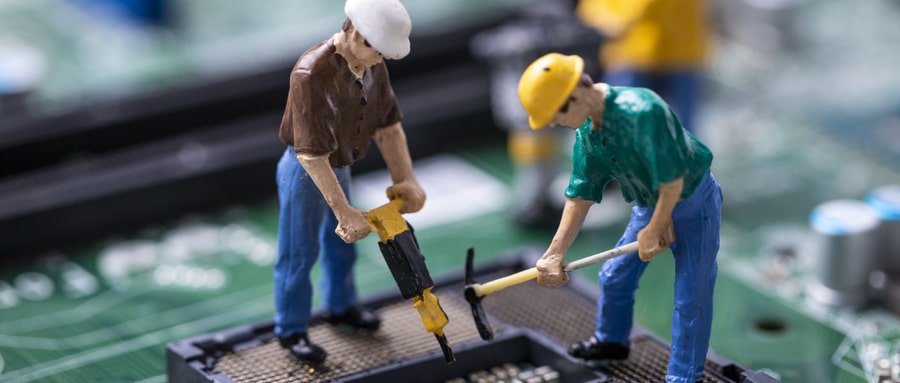Demystifying Solder Mask: What is Solder Mask on PCB?
Printed Circuit Boards (PCBs) are at the core of nearly all modern electronic devices, providing critical functions while remaining complex and intricate enough for perfect performance. To fully comprehend their function, one of their key components – solder mask – must first be familiarized with in order to comprehend its functioning properly. Knowing why a solder mask exists can only benefit those involved or interested in electronics manufacturing and design.
What is Solder Mask on PCB? Solder Mask Definition on PCBs:
What exactly is solder mask on a PCB? Solder mask, also referred to as solder resist or solder stop, is a protective layer applied directly onto the surface of a bare PCB and serves two primary functions – to stop solder bridges forming during soldering process and shield copper traces from environmental factors that may cause corrosion.
What is Solder Mask on PCB? Solder Mask Has Many Functions:
Solder masks play a pivotal role in assembly process by protecting against solder bridges or jumping that could otherwise lead to accidental connections between circuitry elements, potentially leading to short circuits and compromised functionality.
Solder masks only expose areas requiring soldering – such as solder pads – which allow solder to flow directly onto those spots without seeping onto other parts, thereby avoiding unintended electrical connections.
Solder mask plays an essential role in protecting against corrosion on PCBs, with copper traces becoming vulnerable over time when exposed to air and humidity. Solder mask provides effective protection for these exposed traces, prolonging their lifespan while guaranteeing continuous performance.
What is Solder Mask on PCB? Types of Solder Masks:
Solder masks can be divided into various categories depending on application methods and curing methods, including liquid photoimageable solder masks (LPSM), dry film solder masks, silkscreen solder masks. Their selection depends mainly on requirements such as design complexity, type of PCB board used and budget availability.
What is Solder Mask on PCB? Conclusion:
Although solder masks may seem like just another layer, their role in PCB assembly and design is essential. Not only do they ensure a successful, error-free soldering process but they also significantly contribute to prolonging lifespan and optimal functionality of PCBs. Therefore, understanding what a solder mask does helps professionals and hobbyists alike make better design decisions when approaching PCB assembly projects.
Understanding and applying the role of solder mask in PCB assembly could mean the difference between extended life for your electronics and disastrous failure, thus underscoring its necessity and necessitating this in-depth discussion.

FAQ:
1. What is solder mask on pcb?
A solder mask is a layer of protective polymer applied on the copper traces of a PCB (Printed Circuit Board) to prevent short circuits, corrosion, and other potential damage.
2. Why is a solder mask important in PCB manufacturing process?
The solder mask helps prevent accidental solder bridges from forming during the assembly process and it protects the copper from oxidation, thus prolonging the life of the product.
3. What materials are used for a PCB solder mask?
Typical materials used for solder mask include epoxy resin, polymer, and dry film photo-imageable solder mask.
4. Can I choose the color of my PCB solder mask?
Yes, while the most common color is green, PCB solder masks come in various colors including red, blue, white, black, and clear.
5. How is a PCB solder mask applied?
It’s typically applied via screen-printing, curtain coating, or spray coating, and it’s cured through a UV or thermal process.
6. Is the solder mask conductive?
No, a solder mask is non-conductive. It acts as an insulator.
7. How thick is a typical solder mask?
The solder mask thickness usually ranges between 0.2 to 1.2 mils (0.005mm to 0.03mm).
8. Can I have a two-sided PCB without a solder mask?
Technically yes, but it may reduce the life of the PCB and increase the risk of short-circuits.
9. What happens if some areas of my PCB are left without a solder mask?
Uncovered areas will be more prone to solder bridging and copper corrosion.
10. Is it possible to remove a solder mask from a PCB?
Yes, a solder mask can be removed using a solder mask remover or using mechanical abrasion techniques, but it’s not recommended as it may damage the PCB.
11. How is the thickness of a solder mask measured?
The solder mask’s thickness is commonly measured with a digital micrometer.
12. Can I reflow a plate with a solder mask?
Yes, solder masks are designed to tolerate the temperatures of the reflow process.
13. Is there a specific standard governing the application and performance of solder masks?
Yes, the IPC-SM-840D is the standard for qualification and performance of permanent solder mask.
14. What are the major factors to be considered while designing a PCB with a solder mask?
Size of the board, assembly process, end user environment, and contract manufacturer’s capabilities are some of the things to consider.
15. Can I get a custom PCB solder mask?
Yes, many PCB manufacturers allow for custom orders, although this can affect the cost and lead time of your PCB order.























